Founded in 1674 with the arrival of the Fernão Dias flag under the command of Borba Gato, Arraial de Sabarabuçu became Vila Real de Nossa Senhora da Conceição de Sabarabuçu in 1711.
The alluvial gold that flowed from the now polluted and pale Rio das Velhas gave the city a period of prosperity – it was near here that the first gold discoveries were made; in 1867, the British explorer Richard Burton left Sabará on a voyage to the Atlantic, describing the Rio das Velhas as fishy and the vegetation as leafy.
Situated in the valley created by the confluence of the river and the Sabará, the city – now populous, bustling and heavily trafficked – has preserved a considerable Baroque collection in its churches, most of which are listed as National Historic Heritage.
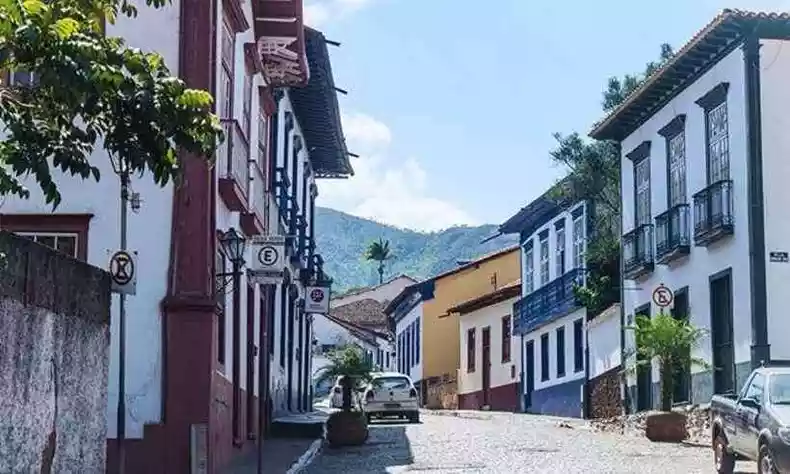
In the countryside and in the neighbourhoods of Sabará, there are still many small chapels from the eighteenth century.
The architectural complex of the old Direita Street, now Dom Pedro II Street, is well worth a walk.
HISTORY OF SABARÁ
The history of Sabará has its roots in the early days of the colonisation of Brazil and is closely linked to the legend of Sabarabuçu, a region of borders.
Sabarabuçu was a source of inspiration for the colonists, who were looking for “a mountain range of silver and precious stones” in the interior.
Captain Matias Cardoso de Labuquerque, a sertanista from São Paulo, was chosen by Fernão Dias Paes to lead the vanguard of the Bandeira das Esmeraldas. His task was to prepare the way, open trails and establish settlements.
After a great deal of travelling, Matias de Albuquerque found a favourable place to set up farms, with a water source, free from the danger of flooding and a place to cross the river on foot. Sabará thus became a place to stay for those travelling through the interior.
In 1674, the flag of Fernão Dias Paes arrived in the region, starting the most important settlement founded by the bandeirante of São Paulo.
However, an important publication by the historian Professor Zoroastro Viana Passos mentions that the Bahians arrived in the hinterland of Sabará in 1555, long before the São Paulo bandeirantes. There are reports that when Borba Gato arrived here, he attended mass in a small chapel that already existed.
Arraial da Barra do Sabará was the strategic commercial centre directly linked to the Estrada Real, and by 1700 it was one of the most populous in Minas Gerais.
In 1711 it was elevated to the status of Vila Real de Nossa Senhora da Conceição do Sabará, also known as Vila do Sabará.
Three years later, it became the seat of the vast Comarca do Rio das Velhas, whose jurisdiction reached the borders of Goiás, Pernambuco and Bahia.
The gold rush led the Portuguese Crown to set up foundries to collect taxes on gold production.
However, after the end of the gold rush, Sabará maintained a relative commercial activity throughout most of the 19th century, and gold is still mined in the municipality today.
In 1822, Sabará contributed a significant amount of money and volunteers to the fight for independence.
The arrival of the Central Railway of Brazil in Sabará inaugurated the Iron Cycle, which continues to this day.
Many remains of the colonial period are waiting to be discovered.
Recent surveys along the Estrada Real and the Caminho da Bahia have highlighted some buildings and ruins, such as the pavement and lime kiln found in the Morro São Francisco landscape complex, the ruins of the Arraial Velho and the so-called Cemitério dos Ingleses in the Serra da Piedade forest, near the Arraial de Pompéu.
The historic centre is home to most of the historical and architectural attractions: 18th century churches, the Municipal Theatre, the Gold Museum, fountains and colonial houses.
In Sabará, there are churches that combine artistic features from different phases of the Baroque style in Minas Gerais.
The parish church of Nossa Senhora da Conceição has features from three periods of Baroque art, a rare occurrence in the historical cities of Minas Gerais.
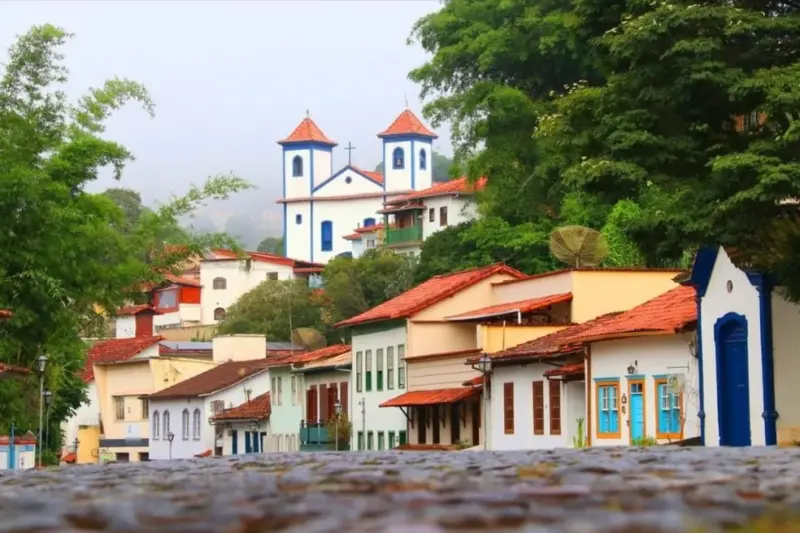
HISTORICAL CURIOSITIES
- Minas’ first colonial settlement
- It was the largest district in colonial Brazil.
- Mother of the state capital
- Land of the Jabuticaba and the Ora-Pro-Nobis
- City of reference for Minas Gerais cuisine (Abrasel)
- Home to the 2nd oldest theatre in Brazil
- Land of the baroque palm and Turkish beak lace
- Home to the only remaining Intendencia and foundry in the country
- One of the few cities in Minas Gerais to have all three phases of the Baroque style.
NAME SABARÁ
The name Sabará has several interpretations. One of the most likely is that it is a corruption of the Tupi-Guarani sabaá (bay, river bend) and buçu (large), referring to the confluence of the Sabará and Velhas rivers. Another interpretation is that the name Sabarabuçu is a derivation of Itaberabuçu, meaning large, shining mountain, alluding to the present-day Serra da Piedade.
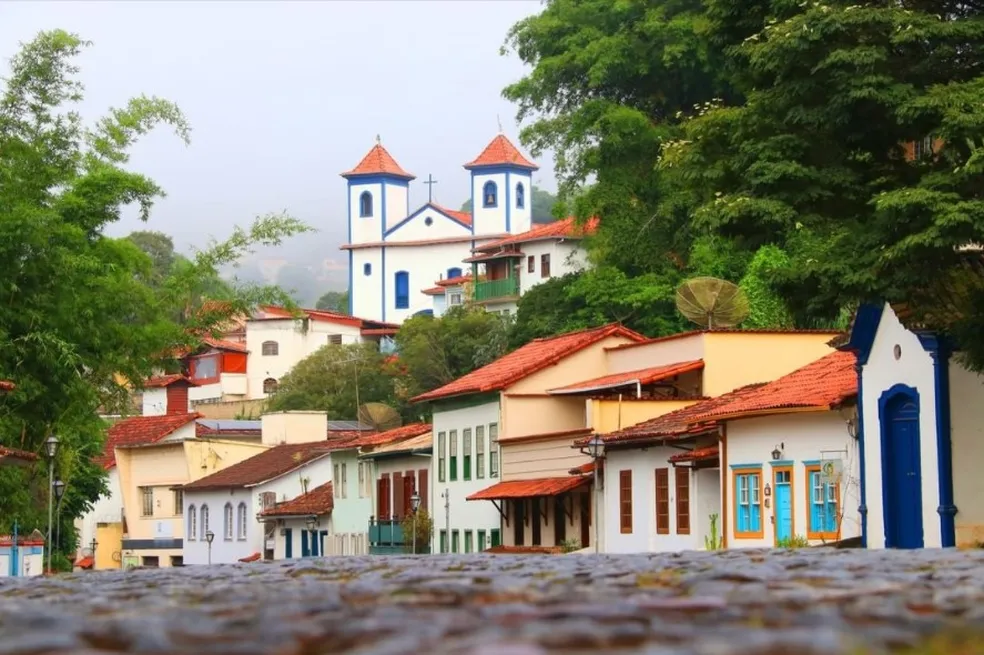
História e Pontos Turísticos de Sabará em Minas Gerais
Discover other historic cities in Minas Gerais
POINTS OF INTEREST IN SABARÁ
Located on the Estrada Real, only 25 kilometres from Belo Horizonte, Sabará is a small town with many attractions.
1. SABARÁ MUNICIPAL THEATRE
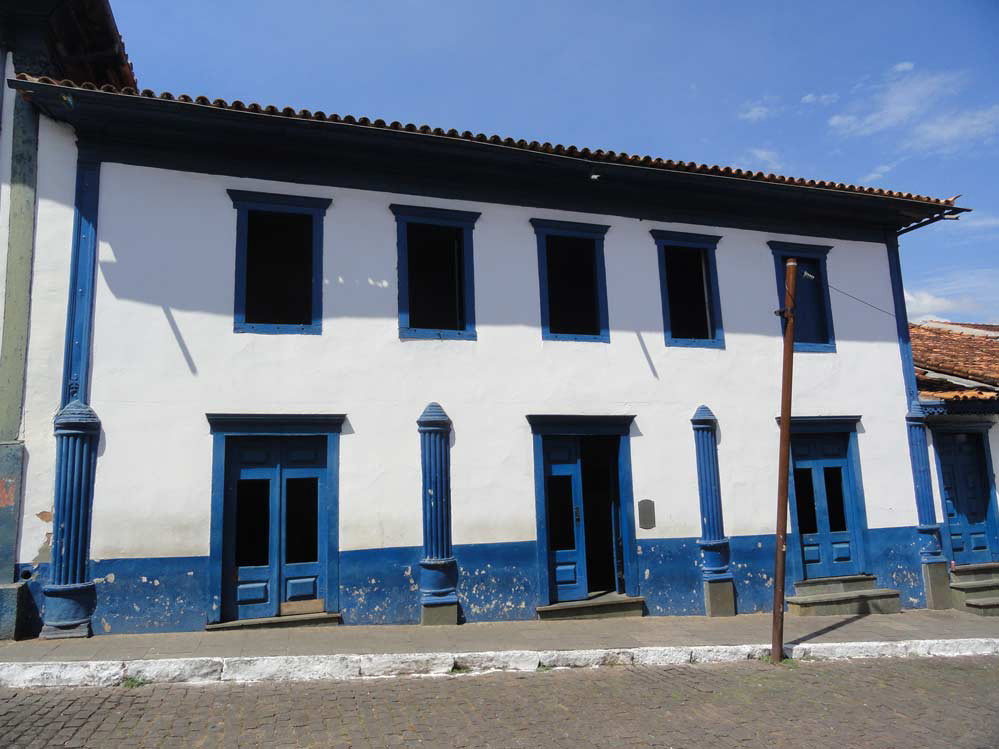
This small and charming theatre, one of the oldest in the country, was inaugurated in 1819 and replaced the old opera house, which was abandoned in 1783 when the city fell into decline due to the gold shortage.
Its history is marked by the visits of two emperors (Dom Pedro I and Dom Pedro II) and a curious local custom: when the theatre didn’t have seats, each inhabitant brought his own chair from home.
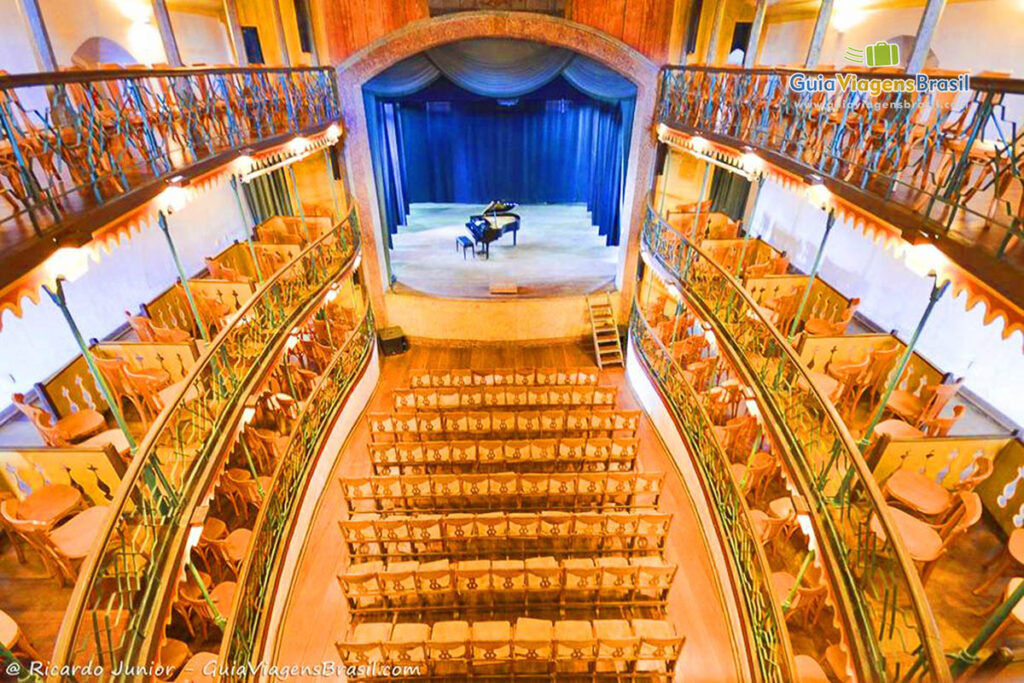
This well-preserved theatre hosts ballet performances, recitals, plays and operas.
It is open during the day. Rua Dom Pedro II, centre.
2. OUR LADY OF THE ROSARY OF THE BLACK CHURCH
Never finished due to the lack of resources of the Brotherhood of Black Men of Barra do Sabará, it still preserves in its main nave the chapel that was to be the temporary chapel; the interruption of the work allows us to see, in the end, what the process of building a church was like.

Between 1767 and 1780, only the sacristy and presbytery were completed, with several restarts and interruptions from that decade until the work was abandoned.
The interior decoration, although simple, depicts pertinent images, although the painting on the ceiling of the presbytery is a little more refined.
Next to it is an important public fountain: the Rosário Fountain, from 1752. Melo Viana Square.
3. GOLD MUSEUM
Located since 1946 in the former house of the Intendência and Foundry, the institution responsible for weighing, smelting and transforming the metal into ingots during the gold cycle, as well as collecting the quinto.

One of the first to operate – and the only one remaining in Brazil – the Intendencia functioned until 1833.
Its collection of more than 300 objects includes original instruments used in gold mining and metal production (a beater, an old press, scales, a case with a weight), models, some sacred objects and silverware, as well as the Santana Mestra, a sculpture by Aleijadinho.
See also Barroco Mineiro.
On the first floor – where the intendant lived – you can see a reproduction of a room with period furniture and, in the landscaped courtyard, a mill for crushing gold ore.
The museum’s historical and bibliographical collection is housed in Casa Borba Gato (Rua Borba Gato, 71, Centro.
4. CHURCH OF THE THIRD ORDER OF OUR LADY OF CARMO
Built between 1763 and 1818 by order of the Third Order of Carmo, to a design by Tiago Moreira, it is the only church in Sabará with works by Aleijadinho.
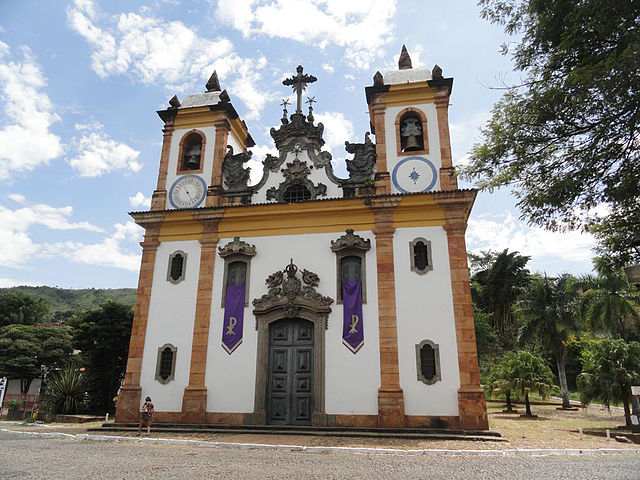
He was responsible for the design of the portal (1770) and its soapstone sculptural decoration (1774); the plan of the balustrades (1779); the polychrome decoration of the nave in gilded wood carving (1781) – the beautiful choir, pulpit, columns and pilasters – and the small atlantes of St Simon Stock and St John of the Cross (1779) that support the choir.
Also noteworthy are the carvings on the two altars of the transept, which are better executed than those on the high altar.
The cemetery, the Passo do Calvário chapel and a cemetery complete the complex. Rua do Carmo, s/n.
5. PARISH CHURCH OF OUR LADY OF THE CONCEPTION
Considered by some scholars to be the oldest parish church in Minas Gerais (1701-10), the building has two towers and a balanced and simple façade.
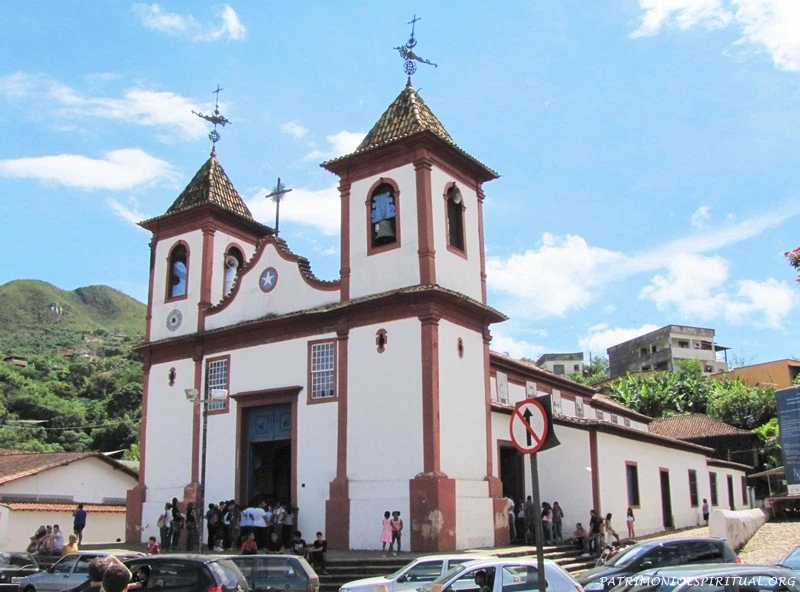
The gilded carvings that cover the interior, characteristic of the first and second phases of the Baroque period, spare no exuberance.
Worthy of note are the beautiful pulpits with their hollowed balustrades, the panelling on the ceiling of the choir, the relief figures on the transept and on each of the eight side altars.
The paintings on the doors that connect the vestries to the choir have an oriental influence, reminiscent of the interior of the church of Our Lady of O. The ceiling of the nave evokes the Litany of the Blessed Virgin.
In the choir there are paintings depicting scenes from the life of Christ. The high altar contains a large image of the Immaculate Conception, brought from Portugal around 1750.
The feast of Our Lady of the Conception, patron saint of the city, is celebrated from 1 to 8 December. Getúlio Vargas Square.
6. CHURCH OF OUR LADY OF O
A precious building that took three years to complete, from 1717 to 1720, it is one of the most expressive of the first phase of Baroque in Minas Gerais. The façade has a single central tower and oriental details.
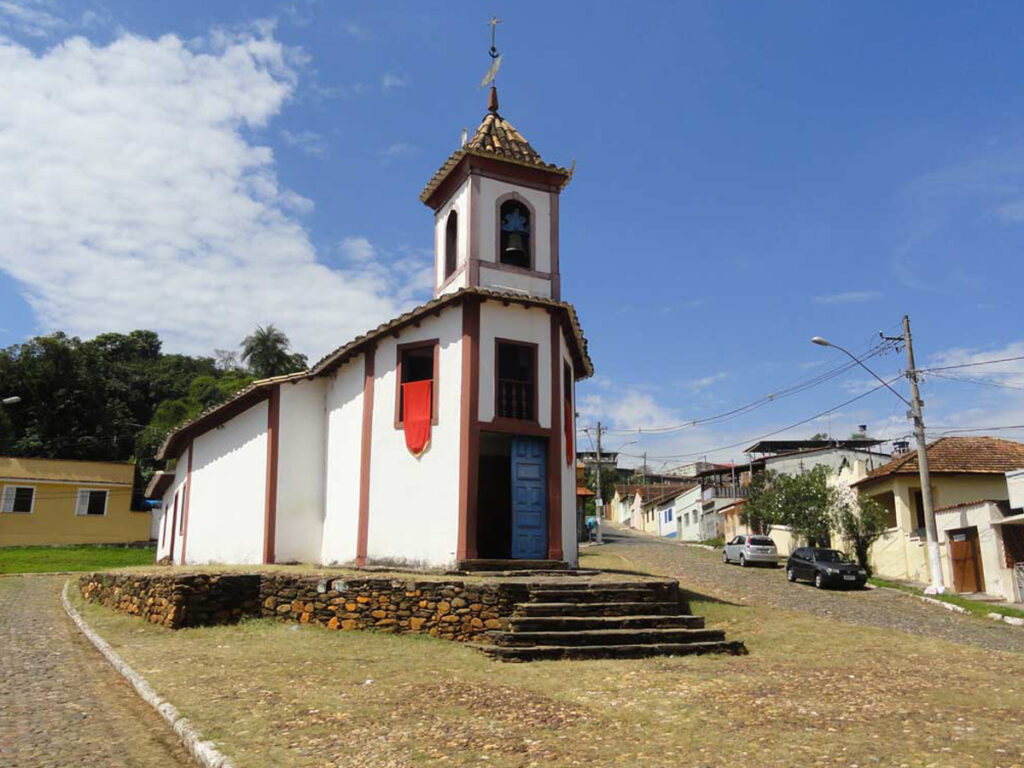
Inside, the rich carvings and paintings in gold, red and blue on the panels of the nave and the ceilings stand out – passages about Mary and the birth of Jesus are worthy of contemplation.
Note the rich oriental features of the transept and the six panels flanking the high altar, whose Chinese motifs of birds and trees are said to have been inspired by Macao porcelain, made around 1725 by craftsmen from that Portuguese possession in the East. The image of the patron saint can be seen on the throne.
As the church is far from the centre, it is recommended that visitors come by car. Largo Nossa Senhora do Ó (exit to Cacté).
KAQUENDE FOUNTAIN
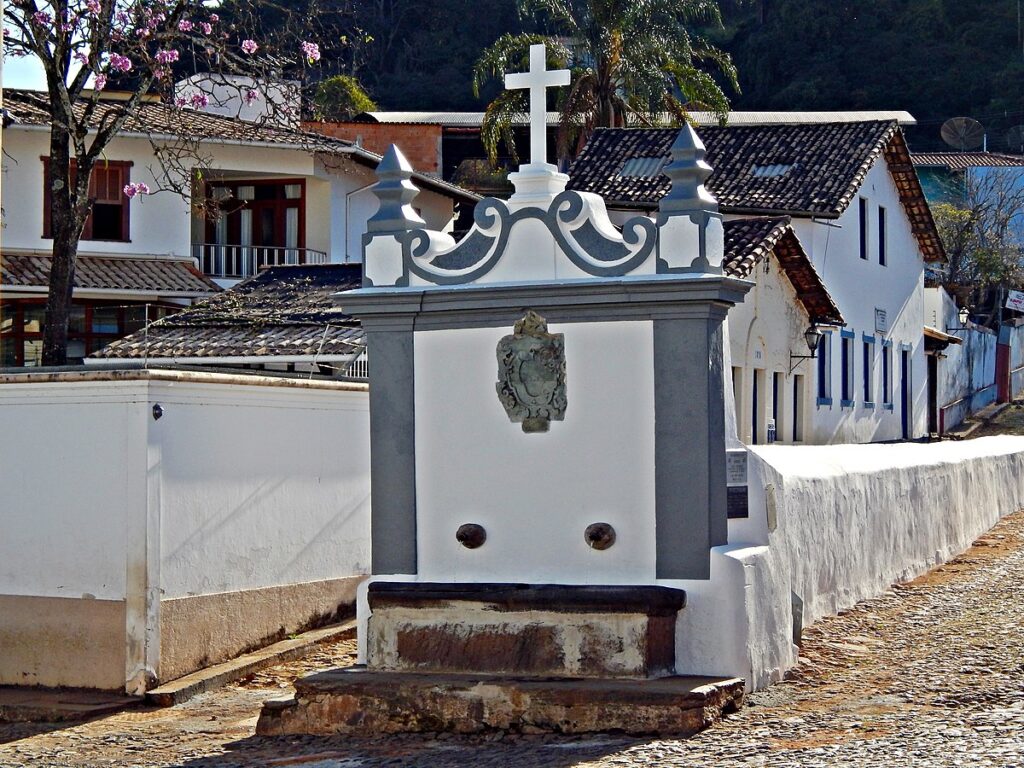
Fountains were the first public facilities built to supply water to the cities of Minas Gerais at the beginning of colonisation. In Sabará, many fountains were built by the town council, a total of eleven that can be found in documents from the 18th and 19th centuries.
However, after many years of providing the population with crystal-clear water, the fountains lost their function with the introduction of piped water to homes at the beginning of the 20th century, leaving only four public and two private fountains.
Three of these, with their beautiful sculptural forms, have only become decorative elements in public spaces.
Only one, the Kaquende, still gives out water.
It was built in 1757, in stone, with two towers and the traditional cross at the top, with a large weathered basin painted grey, one of the colours of the Bragança house.
The water is transported through a closed canal, also made of stone.
However, it is collected in the old alley behind the fountain, in a large basin covered with stone and mortar and surrounded by a high wall.
7. ART
The ancient practice of decorating church altars and oratories with Portuguese palm trees has been revived in Sabará, and to this day local artisans make replicas of palm trees in laminated paper or copper, sometimes plated with gold or silver, which can be found in various shops in the city.
Turkish lace, used to make towels and other items, is another example of Sabará’s handicrafts, passed down from generation to generation, especially among women.
This technique, declared an Intangible Cultural Asset, requires a needle and a stick to mark the distance between the stitches. It is sold at the Craft Centre (Rua Borba Cato, 3, Centro).
8. POMPÉU
In the neighbourhood of Pompéu, an old arraial, the main attraction is the small chapel of Santo Antônio do Pompéu (Rua Raimundo Francisco Ferreira, 26. Pompéu.
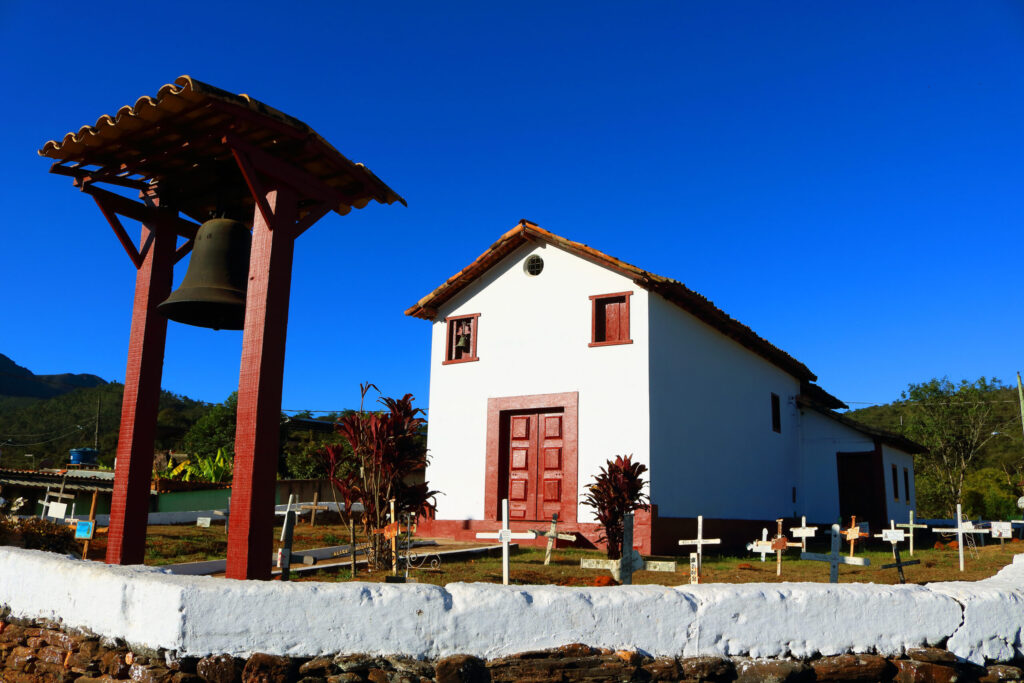
Listed as a National Historic Monument, it is representative of the early Baroque period in Minas Gerais.
It is not known exactly when it was built, but there are records of its existence since 1731.
It has a simple façade and a single altar, and its carvings are similar to those of Our Lady of Ó and the early altars of the Conceição parish church.
The presbytery is very ornate: note the polychrome gilding in gold, red and blue of the altarpiece, made up of twisted columns, and the frame that stands out against the background of an arch with angels in relief with oriental features.
The ceiling painting alludes to the life of Saint Anthony.
Publicações Relacionadas
Tourist Attractions and History of the Caraça Sanctuary MG
Diamantina - Tourist Attractions, History and Architecture
Aleijadinho: Biography and works that shaped the Brazilian Baroque
Tourist attractions and routes in Serra do Cipó MG
Pico do Itacolomi - Attractions, history and itineraries
Royal Road Route - History, routes and attractions
Tourist Attractions and History of Serro in Minas Gerais
Little Church of Pampulha MG: history, architecture and religious importance
Ouro Preto: Historic City of Tourist and Cultural Interest
Mariana: A journey through time to colonial Brazil
Catas Altas MG - History and Monuments
São João del Rei MG - Attractions, History and Architecture
Summary of the history of Minas Gerais
History and Monuments of Tiradentes MG
Baroque of Minas Gerais in Focus: History, Techniques and Works
Sanctuary of Bom Jesus de Matozinhos - History and Architecture
Church of St Francis of Assisi - Ouro Preto: History, architecture and art
This post is also on:
![]() Português
Português ![]() English
English ![]() Deutsch
Deutsch ![]() Español
Español ![]() Français
Français



















